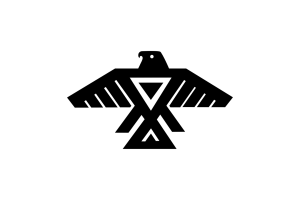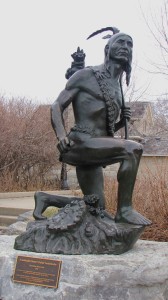The Stories Behind Law

From 10 September to 13 September, approximately forty students and faculty members from Osgoode Hall Law School traveled to Neyaashiinigmiing (Cape Croker), about four hours north of Toronto. Professor Andrée Boiselle worked with John Borrows, his daughter Lindsay Borrows, and their community, the Chippewas of Nawash, to organize the camp and welcome us to Neyaashiinigmiing. Our teachers, meanwhile, came from throughout Neyaashiinigmiing and other areas within Anishinaabe territory. All of our instructors and organizers brought their unique experiences and specialties to provide a multi-faceted journey through Anishinaabe law.
The purpose of the camp was to provide an opportunity for students to learn on the land, engage with Anishinaabe legal traditions, and be introduced to Anishinaabe research methodologies. Rather than learning in a classroom through lectures, we participated in community-based teaching. Our instructors shared their experiences of learning Indigenous law and, to illustrate their journey, led us through a group activity in which we collaborated to address a legal issue through the approach used in Anishinaabe legal pedagogy—taking a story and interpreting it to determine what legal principles it proposed. Throughout the weekend, discussions of the protocols involved in components of the camp revealed the extent to which Indigenous traditions were woven into facets of the trip that I myself may have taken for granted. The most marked example was the procedures involved in observing the sacred fire and respecting the traditions that go into building and maintaining it. We also had the opportunity to converse with local and guest teachers during meals and our spare time, allowing students to discuss particular areas of personal interest related to Indigenous law. Elders and community members welcomed us into an exploration of Indigenous legal traditions and pedagogy by sharing their own stories, which both deepened our understanding of the material and illuminated the significance of what we were learning.
John Borrows told us a story of creation to begin his discussion of constitutional law. Accustomed to regulations, statutes and judicial interpretation, it was difficult for me to understand the connection at first. But as we delved further into that form of legal pedagogy, I developed a deeper appreciation for the truths woven into stories that are passed down and shared. We also learned how narratives are constructed. A speaker went through the frustrations of having treaty rights recognized with regards to the Bruce Peninsula. He told us about willing deceptions and hapless ignorance in his journey to have the rights of his community respected. Another speaker showed us wampum belts, which detailed various treaties and seemed to track the history of agreements.
What I took from the experience was a humbling understanding of what the law can do when it twists and contorts to tell a story that suits one side’s understanding. During our final dinner our host spoke to us about the impact of residential schools, a shameful history inexorably woven into Canada’s national identity. It was a sobering reminder of why it was important for us to participate in the camp and to gain an understanding of where one can learn more about that area of law and that part of our history.

1918. Photo credit: Wikipedia.org
Beyond the pedagogy, participating in the experience was powerful because it connected students to each other. Away from Osgoode, with its veneers and machinations, the camp created a venue in which we were all safe in feeling open with each other. I’m a naturally reclusive person, but I discovered peers who share my interests and peers who are so different that we couldn’t help but click. Over coffee we laughed about pub night shenanigans and confessed the overwhelming sense of responsibility that comes with practicing law. Would we work against systemic barriers to justice, or become cogs? What would it mean to transcend what we understand the law to be? Being welcomed into the space imbued us with a humbling sense of both gratefulness and responsibility. I can’t speak for my fellow attendees, but I feel that the dedication and passion of our hosts inspired us to treat the learning experience as a starting point.
Before leaving we sat around the sacred fire as it burned to embers, sharing our reflections. The common theme, beyond how grateful we were to be part of the experience, was a shared desire to learn more about the intersections between Indigenous law and what we hope to practice, to be conscientious about how our approach to practice may serve to unite communities or reinforce systemic oppression, and to remain committed to the values that drove us to law to begin with.
